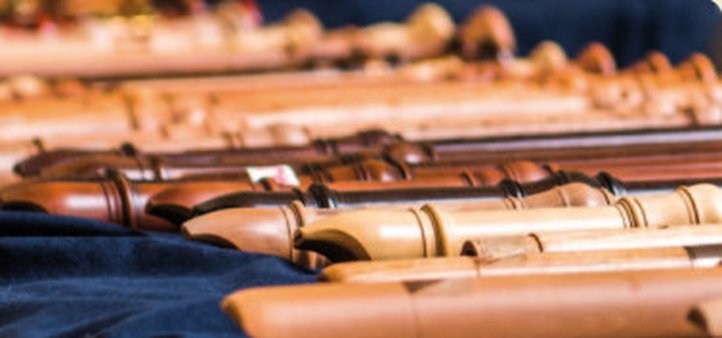The interaction between recorder and voice is a consistent tradition in the repertoire for the instrument. The ERTA (European Recorder Teachers Association – Verein zur Förderung und Pflege der Blockflötenpädagogik in Deutschland e. V.) is focussing on this topic in a congress in cooperation with the HfK Bremen. The organisers invite anybody who might be interested to learn more about lesser known parts of the repertoire for recorder, including teachers of the instrument at music academies or working in self-employment, students, fans of the recorder and singers.
Starting at the very latest with Sylvestro Ganassi (1535), the aim of playing on a recorder has been as a rule to imitate the expressive range of a singing voice. Back then vocal music made up the bulk of the instruments´ repertoire. Collaborating with singing voices went without saying and music still was rarely composed exclusively for instruments alone. Around the year of 1600 a tradition set in to combine vocal parts with ones for instruments that would be written exclusively for recorder.
While instrumental music of the 18th century receives more attention today, during the same period numerous operas and oratories, as well as religious and secular cantatas were composed that used recorders for solos or as orchestral instruments. The ton color of the instrument tended to get used to represent certain affects such as love, pain or sorrow, as well as to illustrate shepherd scenes or mimic birdsong.
In the late 18th and 19th centuries songs with instrumental accompaniment by recorders were composed, as well as numerous works for csacan and flageolet that were based on opera arias.
During the 20th and 21st centuries the combination of recorder and voice saw a new variation with performers playing a recorder and singing or speaking at the same time or alternately. New and surprising sounds are offered by works that have been composed just for a singing voice and a recorder without any other instruments. Larger ensembles with singing voice and recorders usually include additional string-,wind- or percussion instruments.
All this will be showcased and discussed at the ERTA Congress that is scheduled at the University from September 30 to October 3. The classes in recorder, voice and continuo are participating. Students have created the program “Ye sacred Muses” for the opening concert and will support workshops throughout the congress by taking over parts for voice and continuo.
Programs offered by the Congresses
Sven Schwannberger will conduct a workshop on the intermediation between textual contents, structure and representation while playing vocal music of the renaissance on a recorder. Winfried Michel and Jan Van Hoecke will conduct individual workshops on baroque arias, while Dagmar Wilgo will tackle expansions of tone colours in modern music. Peter Thalheimer will shed light on questions regarding concert pitch, higher frequencies and other practical problems arising from parts written for recorder in cantatas by J. S. Bachs. Sven Schwannberger is scheduled to provide a practical introduction in the diminution of renaissance music. Susa Weinbach demonstrates how ones´ body can influence the sound of the recorder, while Tabea Schwartz will present an introduction into solmisation and the applications of this system with the recorder. We also should mention the introductory presentation by Peter Thalheimer on the parts for recorder in operas and cantatas of the baroque and the presentation by Peter Holman: “The Am´rous Flute – the Recorder in English Restoration Vocal Music.”
The program also includes a number of orchestra workshops with Daniela Schüler, Simon Borutzki and Jörg Partzsch; a concert by docents; an homage by Markus Bartholomé on Markus Zahnhausen; an exhibit on sheet music and instruments; and of course many opportunities for conversations and exchanges among participants and visitors throughout.
More infos: www.erta.de/bremen2022

